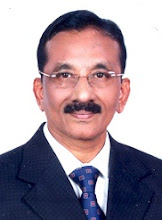New Delhi: The Times of India reported that new customs rules to be implemented from next month will require all
passengers flying into India to self-declare currency exceeding
Rs10,000, gold jewellery and gold bullion in their possession and also be required to declare number of baggage, including hand-carried baggage, while entering into India.
The Customs Baggage Declaration (Amendment) Regulations of 2014 require an Indian citizen to fill up the immigration form only when he or she goes out of the country. Indian citizens returning from abroad are not required to fill up the form, it added.The rules will kick in on March 1, according to a finance ministry notice dated February 10.
Gold mules, duty fraud
The new form will ask for details different from the immigration card (detachable perforated strip) currently in use, with new fields added to declare dutiable and prohibited goods.
The move is aimed to help airport authorities check customs duty fraud. More importantly, it will keep tabs of gold jewellery and bullion being brought into the country, say officials.he Indian government has raised the ante on passengers who work as gold mules. India, the world’s second-biggest gold importer after China, imposed further controls on domestic gold consumption, raising import duty on bullion from 8 per cent to 10 last year.
The gold import curbs and increased taxes dried up demand after Indians went on a gold buying spree following a slump in world gold prices in April last year – which blew a bigger hole in the country’s current-account deficit and led to rupee’s slide. A lion’s share of India's gold demand comes from imports, denominated in dollars.
Earlier, it was announced that all passengers arriving at the country’s 19 international airports must fill out a new detailed customs form starting January 1, 2014. It was not immediately clear if the January 1 target had been moved to March 1.
Now, the form will ask in-bound passengers to specifically declare prohibited goods and dutiable items, including gold jewellery, gold bullion and Indian currency exceeding the permitted limit.
Indian Customs allow male passengers to carry gold worth up to Rs50,000 (Dh3,400) and female passengers twice as much. The currency limit for Indian citizens is set at Rs7,500 (Dh510). Non-resident Indians can take foreign exchange, but they have to declare amounts exceeding $5,000 or equivalent or when the aggregate value of foreign exchange (banknotes, travellers cheques) exceeds $10,000.
“For the first time, travellers would be asked to specifically declare any prohibited articles, gold jewellery (over free allowance), gold bullion and Indian currency exceeding Rs10,000 in the new form,” the report said, quoting an unnamed official.
Other details
Moreover, the passport number must be mentioned on the new form -- a detail not required earlier -- as well as countries visited by a passenger in the past six days, the report said.
“Old fields like declaration of satellite phone, foreign currency exceeding $5,000 or equivalent, aggregate value of foreign exchange including currency exceeding $10,000 or equivalent, meat, meat products, dairy products, fish or poultry products and seeds, plants, fruits, flowers and other planting material have been retained in the new format,” it said.
Gold mules, duty fraud
The new form will ask for details different from the immigration card (detachable perforated strip) currently in use, with new fields added to declare dutiable and prohibited goods.
The move is aimed to help airport authorities check customs duty fraud. More importantly, it will keep tabs of gold jewellery and bullion being brought into the country, say officials.he Indian government has raised the ante on passengers who work as gold mules. India, the world’s second-biggest gold importer after China, imposed further controls on domestic gold consumption, raising import duty on bullion from 8 per cent to 10 last year.
The gold import curbs and increased taxes dried up demand after Indians went on a gold buying spree following a slump in world gold prices in April last year – which blew a bigger hole in the country’s current-account deficit and led to rupee’s slide. A lion’s share of India's gold demand comes from imports, denominated in dollars.
Earlier, it was announced that all passengers arriving at the country’s 19 international airports must fill out a new detailed customs form starting January 1, 2014. It was not immediately clear if the January 1 target had been moved to March 1.
Now, the form will ask in-bound passengers to specifically declare prohibited goods and dutiable items, including gold jewellery, gold bullion and Indian currency exceeding the permitted limit.
Indian Customs allow male passengers to carry gold worth up to Rs50,000 (Dh3,400) and female passengers twice as much. The currency limit for Indian citizens is set at Rs7,500 (Dh510). Non-resident Indians can take foreign exchange, but they have to declare amounts exceeding $5,000 or equivalent or when the aggregate value of foreign exchange (banknotes, travellers cheques) exceeds $10,000.
“For the first time, travellers would be asked to specifically declare any prohibited articles, gold jewellery (over free allowance), gold bullion and Indian currency exceeding Rs10,000 in the new form,” the report said, quoting an unnamed official.
Other details
Moreover, the passport number must be mentioned on the new form -- a detail not required earlier -- as well as countries visited by a passenger in the past six days, the report said.
“Old fields like declaration of satellite phone, foreign currency exceeding $5,000 or equivalent, aggregate value of foreign exchange including currency exceeding $10,000 or equivalent, meat, meat products, dairy products, fish or poultry products and seeds, plants, fruits, flowers and other planting material have been retained in the new format,” it said.




